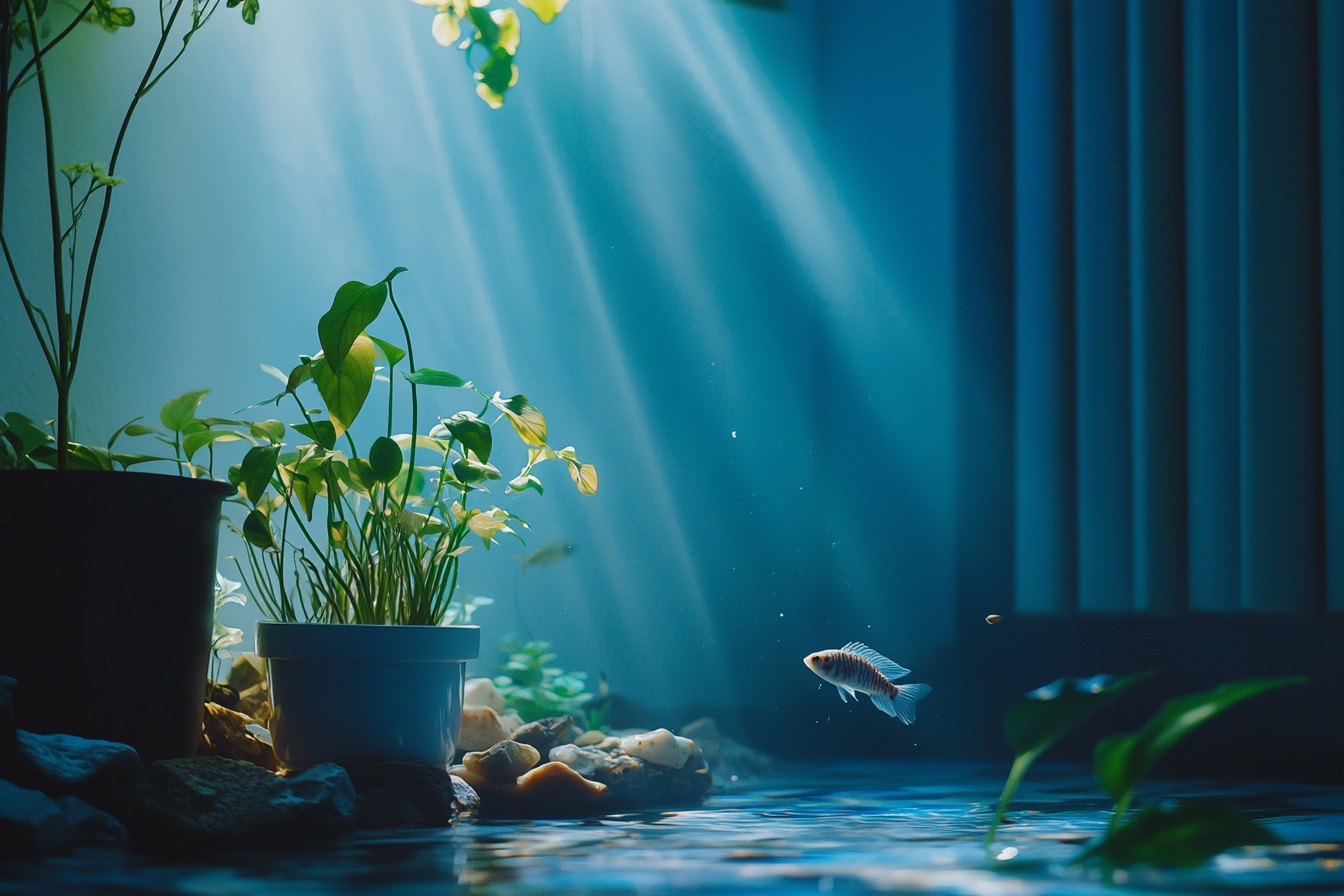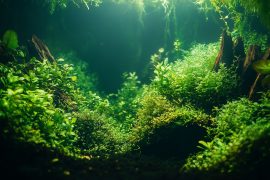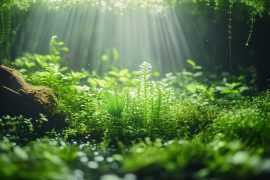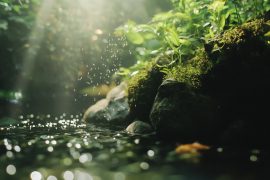I killed my first planted tank with kindness and 400 watts of metal halide lighting. It was the aquatic equivalent of taking a rain forest plant and dropping it in the Sahara at high noon. The water boiled—not literally, but close enough—and within 48 hours, my carefully selected plants had melted into green sludge.
The local fish store guy who sold me that lighting system had assured me that “more light is always better for plants.” To this day, I occasionally send him photos of my award-winning, low-light tanks just to be petty. We all have our flaws. Lighting remains the most misunderstood aspect of planted aquariums, and it’s easy to see why.
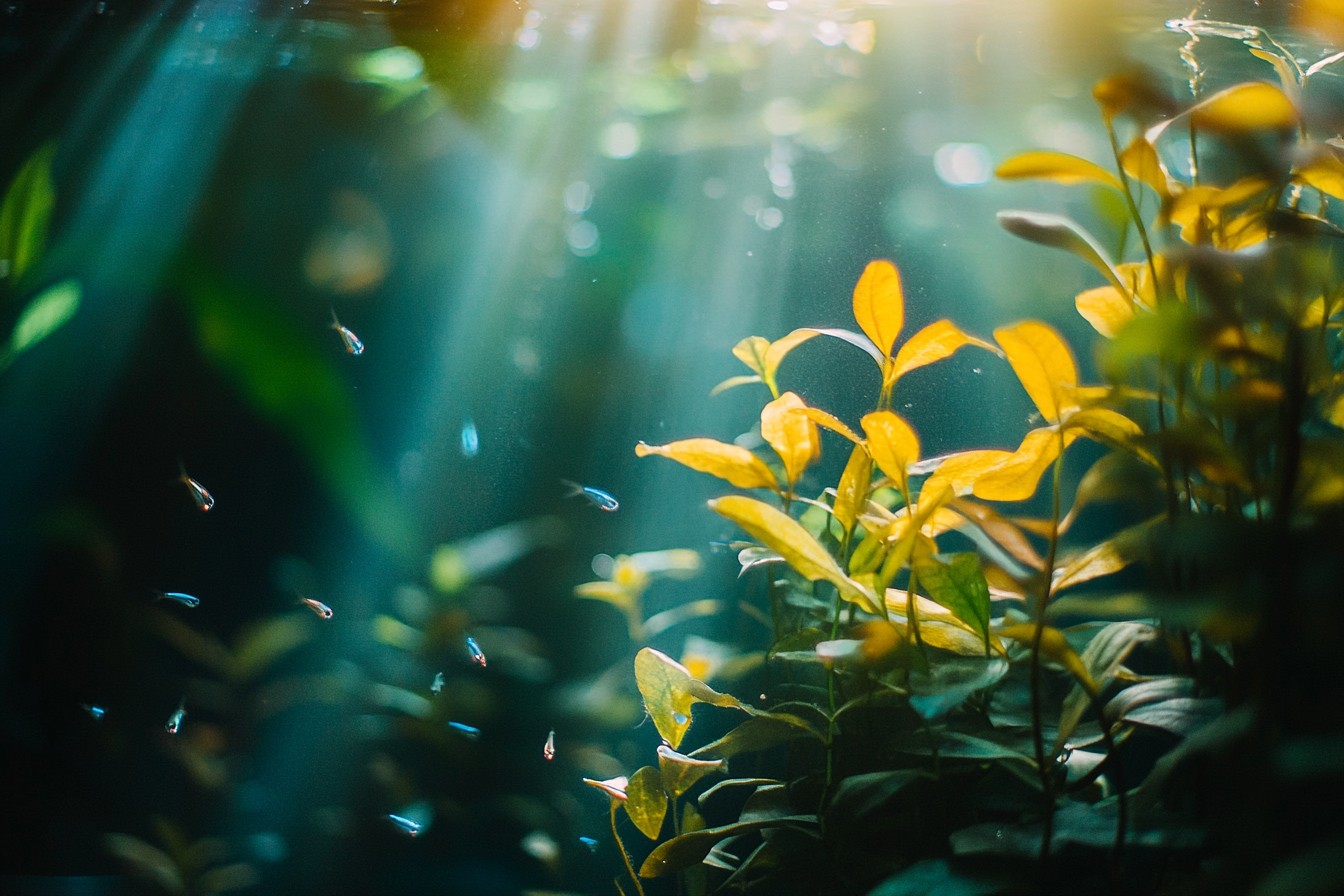
Unlike terrestrial gardening where you get one light source (hello, Mr. Sun) at a reasonably predictable intensity, aquarium lighting throws in variables like water depth, refraction, reflection, spectrum absorption, and the fact that different plants evolved under wildly different lighting conditions. Add in a hobby industry that profits from selling ever-more-powerful lighting systems, and you’ve got a perfect recipe for confusion.
So let’s demystify this mess, shall we? First off, toss out the old “watts per gallon” rule if it’s still rattling around in your brain. It’s about as accurate as measuring your shoe size to determine your intelligence.
Wattage measures energy consumption, not light output, and with modern LED fixtures delivering wildly different intensities per watt than fluorescents or metal halides, it’s a useless metric. My current favorite tank runs on 35 watts of LED that outperforms the 400-watt halide disaster from my rookie days. What actually matters is PAR—Photosynthetically Active Radiation—which measures the specific light wavelengths plants can use for photosynthesis.
Unfortunately, good PAR meters cost hundreds of dollars, and most hobbyists don’t have access to them. This leaves us with the next best approach: observation and adjustment. I’ve set up over 200 tanks in my career, and I now start almost all of them with less light than I think they need.
Why? Because insufficient light causes slow growth, while excessive light triggers algae blooms, plant stress, and a cascade of problems that can crash an entire system. It’s far easier to gradually increase intensity than to fight back the green water and hair algae that excessive lighting invites.
The hardest lesson for many aquascapers to learn is that plants don’t need the stunning, high-intensity lighting that makes tanks look gorgeous in photographs. Many of our favorite aquatic plants grow in the wild beneath dense canopies or in turbid waters where they receive a fraction of the light we blast them with in home aquariums. When we crank up lighting to competition levels, we’re often creating an artificial environment that requires additional CO2 injection, aggressive fertilization, and constant maintenance just to prevent the whole system from collapsing.
My approach to lighting has evolved dramatically over the years. I used to chase the dramatic shadows and shimmering effects that high-powered, point-source lights create. Now I prioritize plant health, stable growth, and sustainability—which often means using less intense, more diffuse lighting than what you’d see in competition tanks.
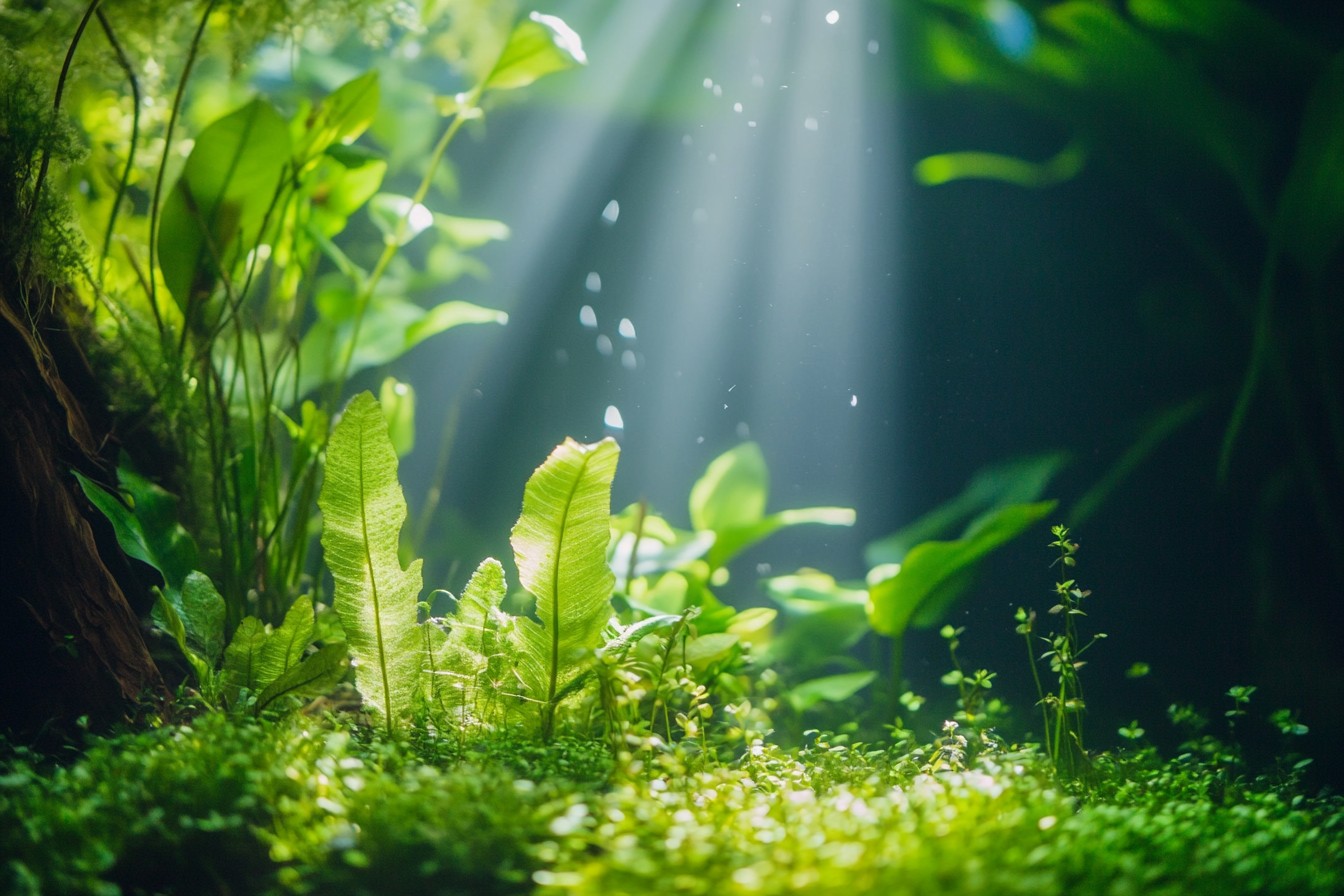
For most planted tanks, especially for beginners, I recommend a high-quality LED fixture that provides between 40-60 PAR at the substrate level. If you don’t have a PAR meter (and most don’t), look for fixtures specifically designed for planted tanks with a total wattage of around 0.5-0.7 watts per liter, depending on tank depth. This range typically provides enough light for most easy and medium-difficulty plants without pushing the system into the high-maintenance danger zone.
Color temperature is another widely misunderstood aspect of aquarium lighting. You’ll often hear that plants “need” 6500K lighting because it mimics natural sunlight. While 6500K does appear pleasing to the human eye and works perfectly well for plant growth, the truth is that plants couldn’t care less about Kelvin rating.
They respond to specific wavelengths—primarily red and blue—regardless of the perceived color temperature. This is why those purplish “grow lights” can successfully grow plants despite looking terrible to us. And it’s why I’ve had lush plant growth under everything from 4000K “warm white” LEDs to 10000K “cool white” T5 fluorescents.
The Kelvin rating affects how your tank looks to you, not how effectively it grows plants. My personal preference lands around 7000K for most planted tanks—slightly cooler than the often-recommended 6500K. This slightly bluish-white light brings out the greens in plants while still rendering reds and oranges accurately enough.
But this is purely aesthetic. If you prefer a warmer, sunset-like glow, a 5000K setup will grow plants just fine while creating that ambiance. The real game-changer in modern aquarium lighting isn’t intensity or color temperature—it’s control.
Programmable fixtures that gradually ramp up and down in intensity, mimic cloud cover, or even change color temperature throughout the day have revolutionized what’s possible. These features aren’t just bells and whistles; they fundamentally change plant growth patterns and fish behavior. I was skeptical of these “fancy” features until I installed a high-end programmable LED system on my 120-gallon Amazon biotope.
The difference in both plant health and fish behavior was immediate and dramatic. With gradual sunrise and sunset periods, the fish displayed natural crepuscular feeding behaviors instead of the startled frenzy that occurs when lights snap on and off. Plants developed more compact, attractive growth patterns with the varied intensity.
Even algae growth decreased, seemingly confused by the constantly changing conditions that prevented any one type from gaining a foothold. Now I won’t set up a serious planted tank without programmable lighting that includes at least these basic functions:
- 30+ minute ramp-up/ramp-down periods
- Midday intensity adjustment (a slight decrease in intensity for a few hours at peak)
- At least one cloud cover simulation during the photoperiod
- A true moonlight setting (extremely dim, preferably bluish) for evening viewing
My current favorite setup includes a thunderstorm mode that randomly flashes while reducing overall intensity, mimicking the light patterns of a rainy day. Pure theater?
Maybe. But the temporary reduction in light actually triggers interesting responses in certain plants, particularly those from regions with distinct rainy seasons. Lighting placement and coverage deserve more attention than they typically receive.
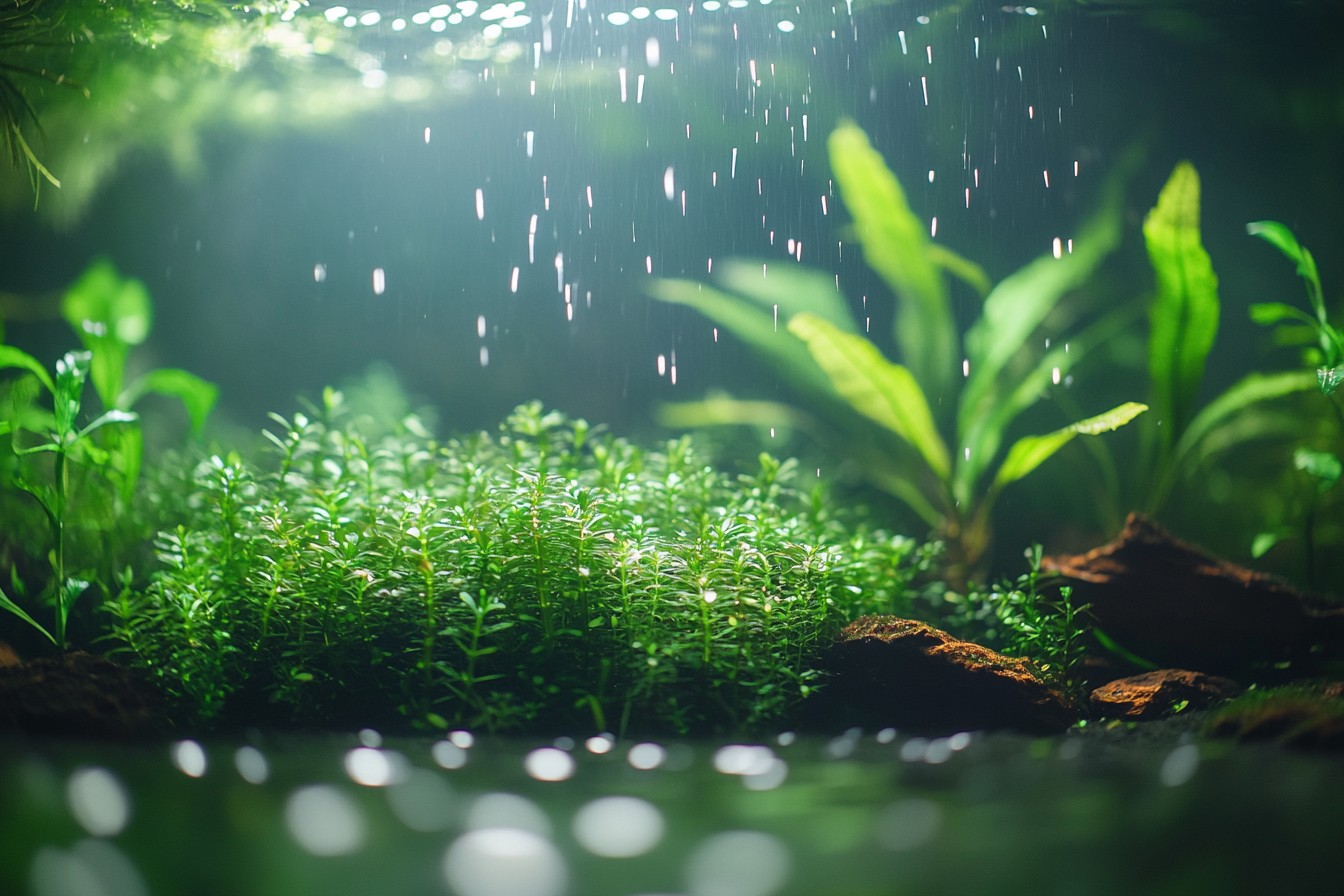
Many hobbyists focus exclusively on intensity and spectrum while ignoring how light is distributed across the tank. Uneven lighting creates hot spots where algae thrives alongside cold spots where plants struggle, undermining the entire system. For standard rectangular tanks, I typically recommend lighting that covers at least 80% of the tank length to ensure even distribution.
For odd-shaped tanks or paludariums with both emergent and submersed sections, multiple smaller fixtures often work better than a single large unit, allowing you to tailor the intensity to different areas. Height above the water surface dramatically affects light spread and penetration. Raising lights higher increases coverage area but reduces intensity; lowering them concentrates light but creates more dramatic shadows and uneven distribution.
I typically position lights about 10-15cm above the water surface as a starting point, then adjust based on observed growth patterns and algae formation. Shadows are both friend and enemy in a planted tank. Strategic shadows create depth, enhance colors, and provide visual interest—but they also create dead zones where plants struggle and detritus accumulates.
I deliberately design hardscapes to create some shadowed areas for visual drama while ensuring that light can still reach all planted areas, even if at reduced intensity. One often-overlooked aspect of aquarium lighting is its impact on viewing experience. The most perfectly balanced, plant-friendly lighting is worthless if it creates so much glare that you can’t actually see into the tank.
I’ve adjusted or replaced otherwise excellent lighting systems solely because they produced blinding reflections from normal viewing angles. For home tanks meant to be enjoyed rather than just photographed, I strongly prefer fixtures with multiple smaller LEDs behind a diffuser panel rather than high-powered spotlights. These provide more even illumination with fewer harsh shadows and surface reflections, making the tank more viewable from multiple angles.
After years of experimentation, I’ve settled on a personal lighting philosophy that prioritizes stability over intensity. My tanks typically run 8-hour photoperiods with moderate lighting that supports healthy plant growth without demanding constant attention. I’d rather add an extra low-light plant species than increase lighting intensity to the point where the entire system teeters on the edge of an algae bloom.
This approach isn’t as dramatic as the high-intensity lighting showcased in competition aquascapes, and my tanks won’t win awards for the most vibrant reds or the most pearling oxygen bubbles. But they’re sustainable, enjoyable, and—most importantly—they don’t collapse if I go away for a long weekend without hiring a full-time tank sitter. Lighting is the foundation upon which all other aspects of planted aquariums rest.
Get it right, and your fertilization, CO2, and maintenance routines will all become simpler and more effective. Get it wrong, and you’ll forever chase problems without addressing their source. In the fifteen years I’ve spent creating underwater landscapes, I’ve learned that the most beautiful tanks aren’t necessarily the brightest—they’re the ones where lighting works in harmony with every other element to create a stable, thriving micro-ecosystem.
And that initial 400-watt disaster tank? I eventually rebuilt it with 60 watts of carefully selected, properly positioned LEDs. It went on to house a thriving community of Cryptocoryne species for over four years with minimal maintenance.
Sometimes less truly is more—a lesson that cost me several hundred dollars and countless hours of frustration to learn, but one I’ll never forget.
